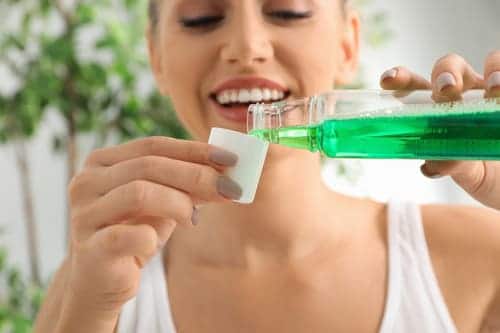
Mouthwash, also known as oral rinse or mouth rinse, is a valuable addition to any oral hygiene routine. While brushing and flossing are essential for removing plaque and food particles from the teeth and gums, mouthwash offers additional benefits by freshening breath, killing bacteria, and promoting overall oral health. However, to reap the full benefits of mouthwash, it’s essential to use it correctly and incorporate it into your daily routine effectively. In this comprehensive guide, we’ll delve into everything you need to know about using mouthwash effectively, including types of mouthwash, proper usage techniques, and tips for maximizing its benefits.
Understanding the Types of Mouthwash:
Before we explore how to use mouthwash effectively, let’s first understand the different types available and their specific benefits:
- Antiseptic Mouthwash: This type of mouthwash contains antibacterial ingredients, such as chlorhexidine or cetylpyridinium chloride, which help to kill bacteria in the mouth and prevent plaque buildup. Antiseptic mouthwash is effective for maintaining overall oral hygiene and reducing the risk of gum disease.
- Fluoride Mouthwash: Fluoride mouthwash contains fluoride, a mineral that helps to strengthen tooth enamel and prevent cavities. Fluoride mouthwash is particularly beneficial for individuals at high risk of tooth decay, such as those with dry mouth or a history of cavities.
- Cosmetic Mouthwash: Cosmetic mouthwash is primarily designed to freshen breath and may contain ingredients such as mint or cinnamon for flavoring. While cosmetic mouthwash does not provide the same antibacterial benefits as antiseptic mouthwash, it can be a useful addition to your oral hygiene routine for maintaining fresh breath.
- Prescription Mouthwash: Some individuals may require prescription-strength mouthwash, which is prescribed by a dentist or oral health professional to address specific oral health concerns, such as severe gum disease or oral thrush.
Proper Techniques for Using Mouthwash:
Now, let’s explore the step-by-step process of using mouthwash effectively:
- Choose the Right Mouthwash: Select a mouthwash formulation that addresses your specific oral health needs, whether it’s reducing plaque and bacteria, preventing cavities, or freshening breath.
- Measure the Correct Amount: Pour the recommended amount of mouthwash into the cap or a measuring cup. Be sure to follow the instructions on the product label carefully to avoid using too much or too little.
- Swish and Gargle: Take a small sip of mouthwash and swish it around your mouth vigorously for 30 to 60 seconds, making sure to coat all surfaces of your teeth and gums. Gargle the mouthwash at the back of your throat to reach the area around your tonsils and the back of your tongue.
- Spit Out the Mouthwash: After swishing and gargling, spit out the mouthwash into the sink. Avoid swallowing the mouthwash, as it may contain ingredients that are not intended for ingestion.
- Avoid Rinsing with Water: To maximize the benefits of mouthwash, avoid rinsing your mouth with water immediately after using it. Allow the mouthwash to remain in your mouth for at least 30 minutes to ensure that the active ingredients have time to work effectively.
Tips for Maximizing the Benefits of Mouthwash:
- Use Mouthwash at the Right Time: Incorporate mouthwash into your oral hygiene routine after brushing and flossing, ideally before bedtime. This allows the mouthwash to penetrate between teeth and along the gumline to kill bacteria and freshen breath.
- Be Consistent: Use mouthwash regularly as part of your daily oral hygiene routine to maintain optimal oral health benefits. Consistency is key to achieving long-term results.
- Choose Alcohol-Free Options: If you have sensitive gums or are prone to dry mouth, consider using an alcohol-free mouthwash to avoid irritation and discomfort.
- Combine with Other Oral Hygiene Practices: Mouthwash should complement, not replace, regular brushing and flossing. Be sure to continue brushing and flossing your teeth daily to remove plaque and food particles effectively.
- Consult with Your Dentist: If you have specific oral health concerns or are unsure which type of mouthwash is best for you, consult with your dentist or oral health professional for personalized recommendations and guidance.
Conclusion:
Using mouthwash effectively is a valuable component of maintaining good oral hygiene and promoting overall oral health. By choosing the right type of mouthwash, following proper usage techniques, and incorporating it into your daily routine consistently, you can enjoy the benefits of fresher breath, reduced plaque and bacteria, and stronger tooth enamel. Remember to consult with your dentist regularly for personalized recommendations and guidance on maintaining optimal oral health. With the right approach to mouthwash usage, you can achieve a bright, healthy smile and enjoy the confidence that comes with it.